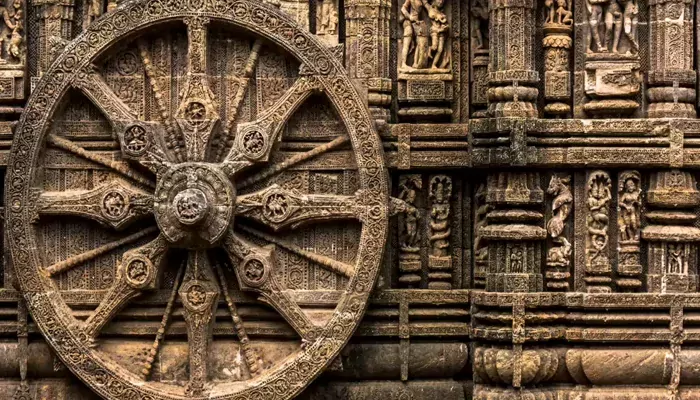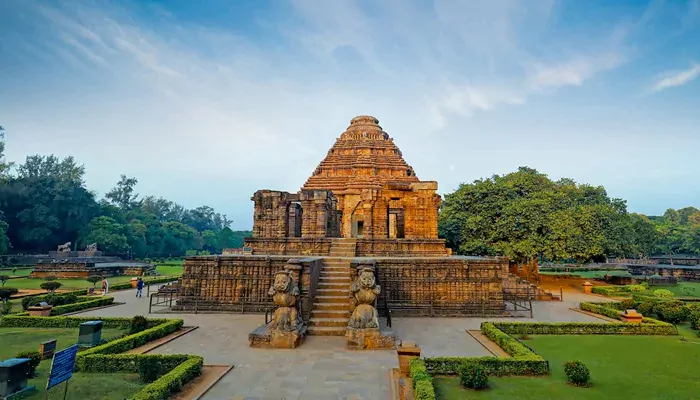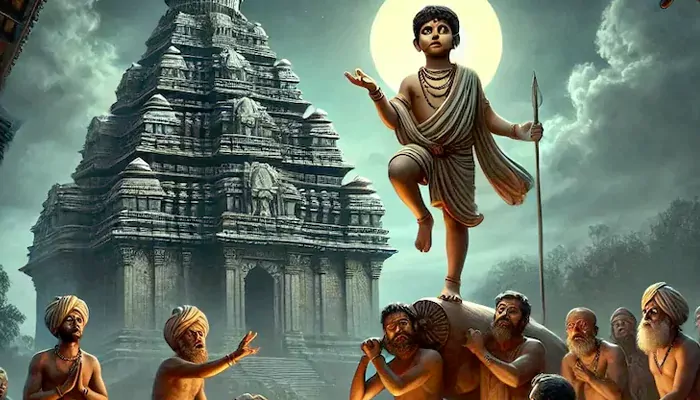
Once taller than the tides and more precise than a clock, Konark Sun Temple remains a breathtaking blend of devotion, science, and sacrifice — carved in stone, yet timeless as the sunrise
It rises from the coastal plains of Odisha like a dream etched in stone — the Konark Sun Temple, a 13th-century marvel that dared to chase the dawn. Conceived not merely as a place of worship but as a celestial chariot for the Sun God Surya himself, this awe-inspiring monument stands as a masterclass in vision, geometry, symbolism, and spiritual aspiration.
Once over 200 feet tall, the temple was the brainchild of King Narasimhadeva I of the Eastern Ganga dynasty, whose craftsmen dared to shape granite into a moving cosmos. Built around 1250 CE, it is a monument to India's architectural zenith and civilizational pride — a temple so aligned with the rhythms of the universe that it welcomed the first light of every dawn into its heart.
Imagine a chariot frozen mid-flight — that's Konark. The temple was crafted as Surya's celestial vehicle, pulled by seven horses and powered by twenty-four intricately carved stone wheels, each with a diameter of 12 feet. These wheels serve not only as decorative features but also function as sundials, symbolising the constant progression of time. They divide the day into exact segments, illustrating how science and spirituality are intertwined in ancient India.

(Credit: TOI)
The seven horses symbolise the seven days of the week, representing the passage of time, while the twelve pairs of wheels stand for the twelve months, illustrating the cycle of seasons. Together, they portray time as a poetic, recurring journey — a wheel constantly in motion.
The temple's orientation is deliberate. Facing east, its architecture ensured that the first rays of sunlight would brighten the presiding deity — an image of Surya now lost to history. In this way, the temple literally chased the sun, transforming each sunrise into a cosmic act of worship.
This was not merely faith but precision — a feat that demanded a profound understanding of astronomy, geography, and sacred geometry. The square-and-circle mandala plans, drawn from ancient texts like the Silpasarini, were brought to life by hands guided by the stars.
Today, the sanctum or vimana lies in ruins. The towering spire that once pierced the skies collapsed sometime before the 19th century, leaving behind only the Jagamohana, or audience hall, which still guards the silence of ages with stoic grace. What remains continues to leave both scholars and pilgrims awestruck.

(Credit: Incredible India)
The temple was once called the "Black Pagoda" by European sailors navigating the Bay of Bengal, standing in contrast to the "White Pagoda" — the Jagannath Temple in Puri. Together, these two served as a beacon for those at sea and for those seeking the divine.
No tale of Konark is complete without the haunting legend of Dharmapada, the 12-year-old boy who solved the temple's most baffling engineering challenge — placing the crowning stone. According to local lore, fearing disgrace for being outwitted by a child, the artisans begged him to vanish. In a final act of modesty, Dharmapada leapt into the Chandrabhaga River, sacrificing his life to uphold the honour of 1,200 artisans.

(Credit: India Today)
It may be a myth, but it contains a timeless truth: some monuments are built not only with stone, but with sacrifice, genius, and unwavering devotion.
Through time, invasions, and the natural elements have eroded the structure, but Konark still stands scarred and unbowed. It was designated a UNESCO World Heritage Site in 1984, and ongoing restoration efforts continue to preserve this landmark for future generations.